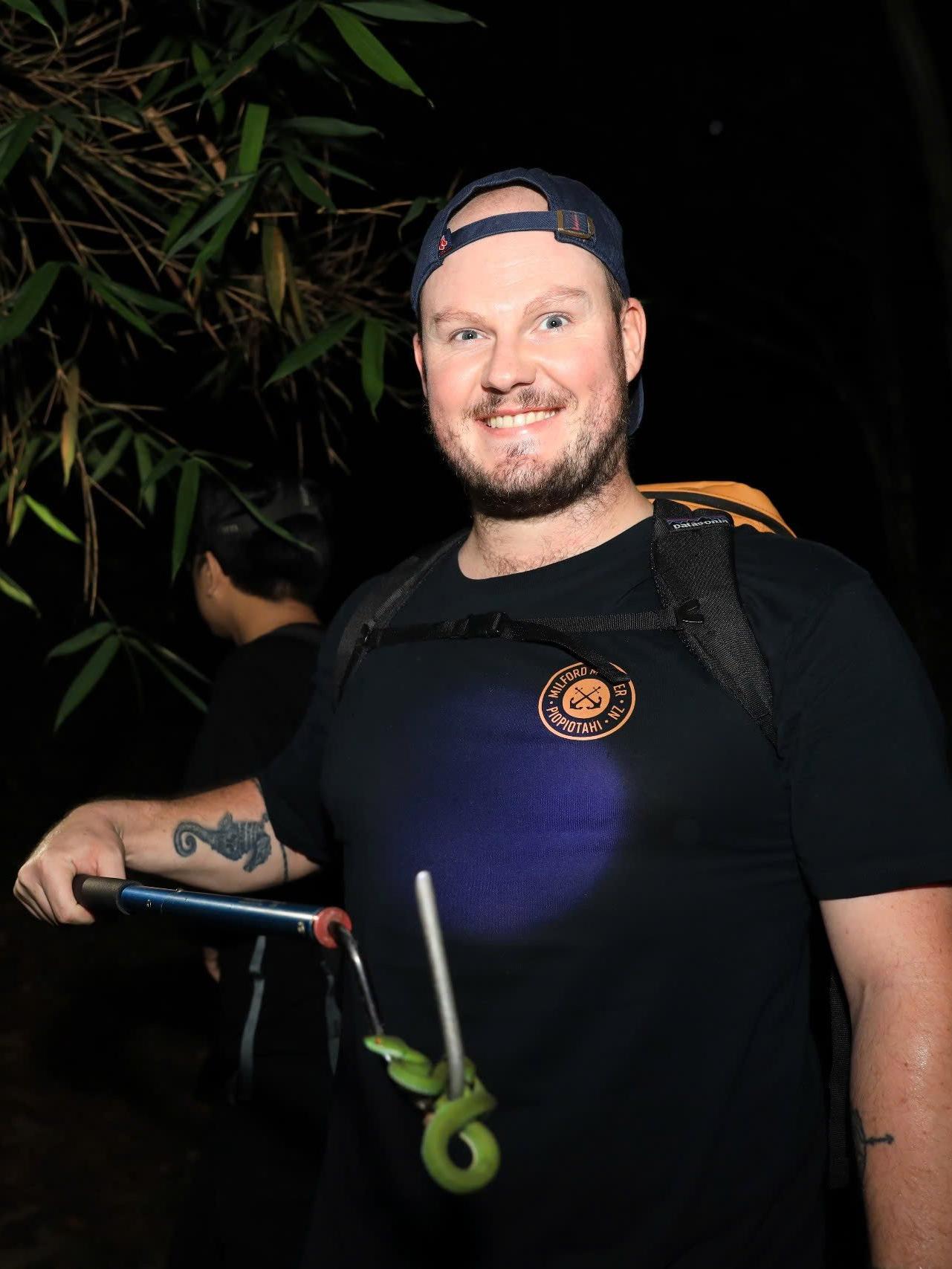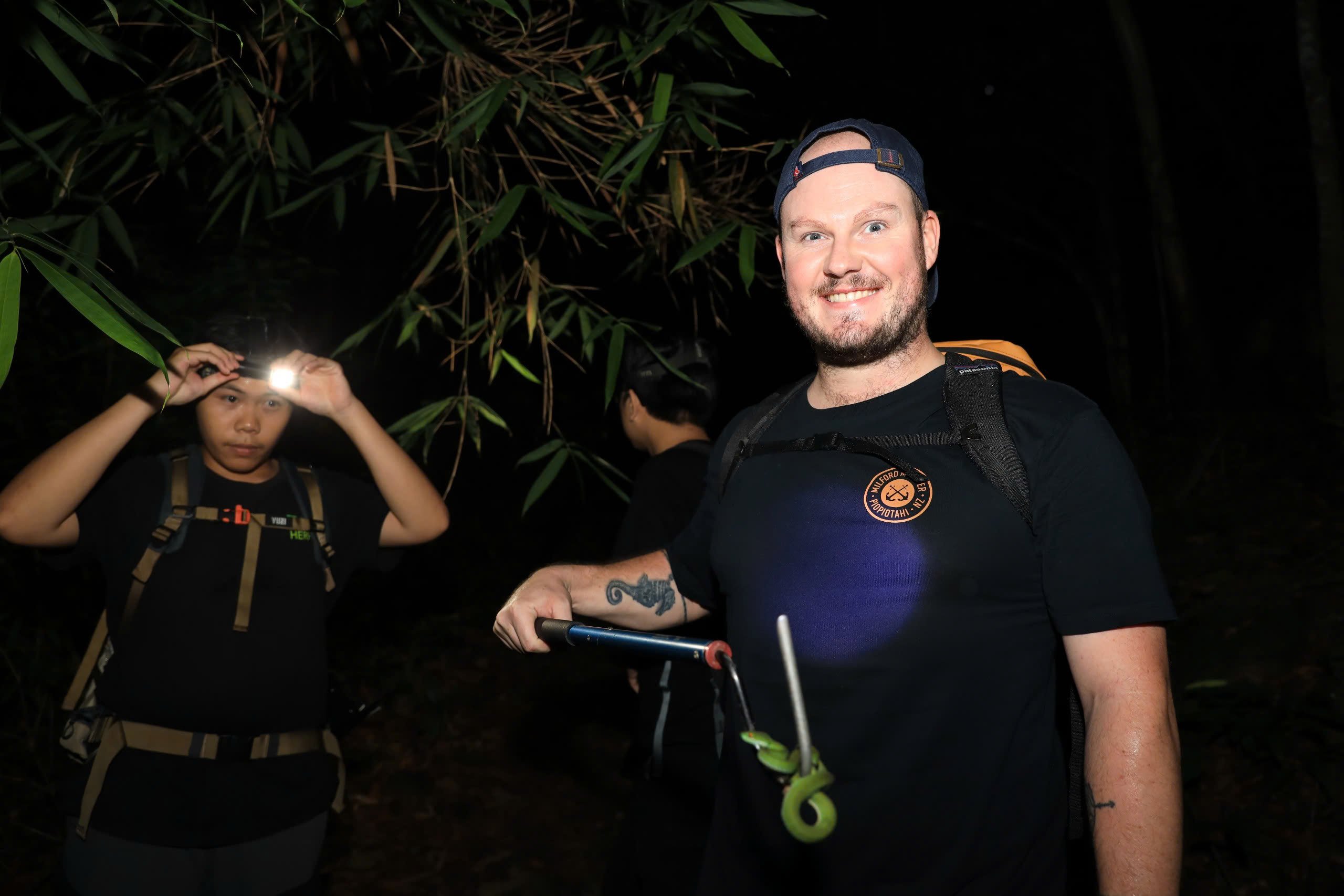Night forest herping tour in Ho Chi Minh City
For a long time, ecotourism with activities such as trekking or hiking has been familiar to those who are passionate about traveling. Recently, the form of herping tourism close to nature has also attracted a lot of attention, especially foreign tourists who want to explore Vietnam's nature.
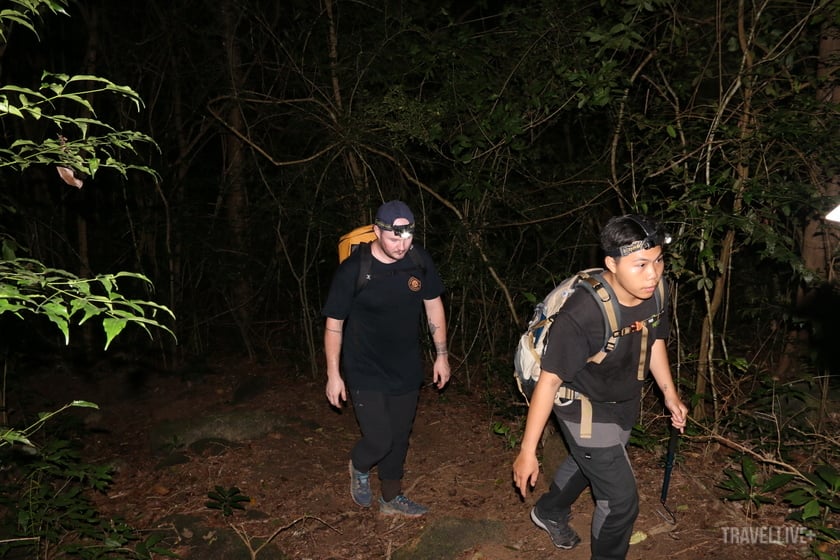
Herping trips usually take place at night in the forests with journeys lasting tens of kilometers.
Herping is a term derived from “Herpetology” which is the study of reptiles and amphibians. This is an outdoor activity in dense forest areas to search for, observe, photograph and record reptiles and amphibians, especially snakes in their natural habitat. Herping usually takes place at night because most reptiles and amphibians are active during this time. However, there are still herping sessions that take place during the day to search for diurnal snakes.
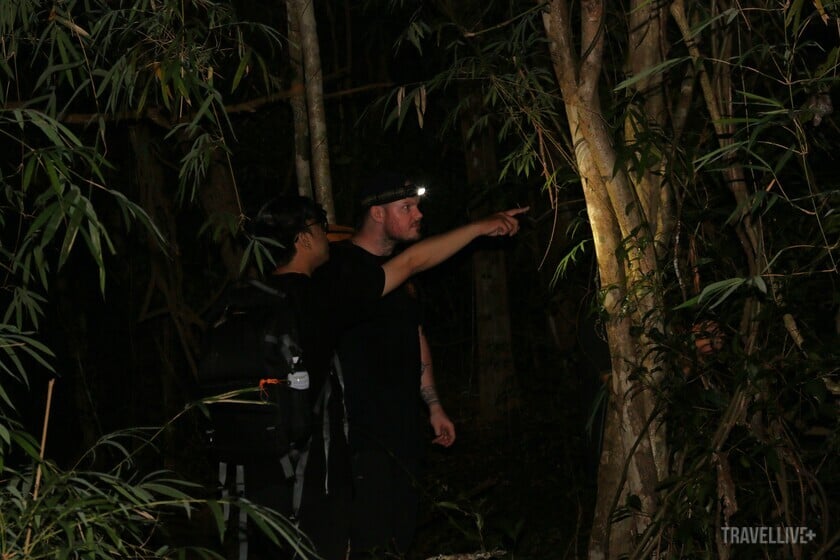
Herping guides must have good knowledge of reptiles and amphibians and good observation and positioning of animals in poor lighting conditions.
Because he loves nature, on his first visit to Vietnam, Benjamin McShane (30 years old, from New Zealand) immediately connected with Viet Herping - a group of young people who often organize herping tours to raise funds for the release and conservation of Vietnamese snakes.
After two herping trips in Tuyen Quang and Hanoi, Benjamin continued to explore the night forest at Nui Dinh (HCMC) with tour guide Phan Tan Loc and two other reptile-loving friends. The group "traveled" by motorbike from the city center to Nui Dinh at noon. When night fell, the herping trip began.
With basic equipment including flashlights, medical tools, raincoats... Tan Loc led the guests through the forest trails that often had many reptiles and amphibians. After traveling more than 3 km, the group encountered a red-tailed green pit viper in camouflage, lying still on a small tree branch. Seeing his favorite snake, Mr. Benjamin happily observed the animal for quite a while. He was also instructed to interact indirectly with the animal using a snake hook at a safe distance because this is a poisonous species.
However, venom is typically used by snakes for hunting and self-defense, so the animal will not actively attack humans unless disturbed or handled improperly.
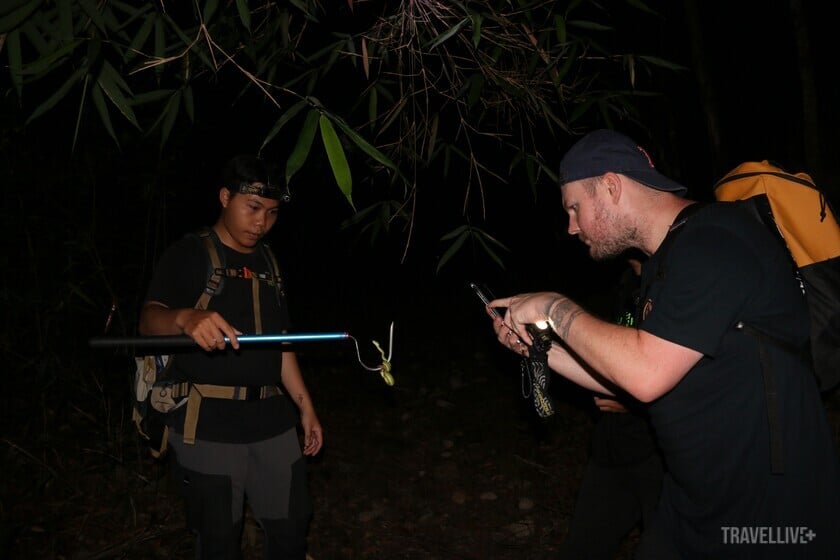
Mr. Benjamin was instructed by Tan Loc to safely take photos of red-tailed green pit vipers.
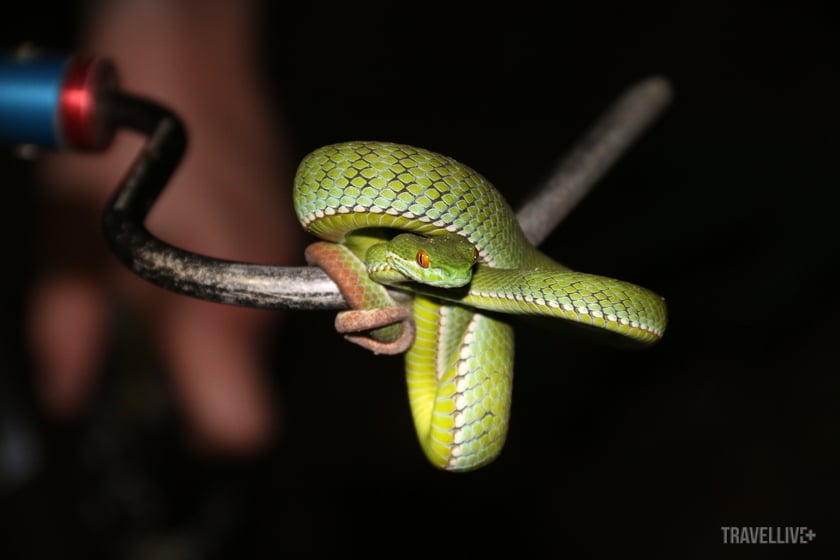
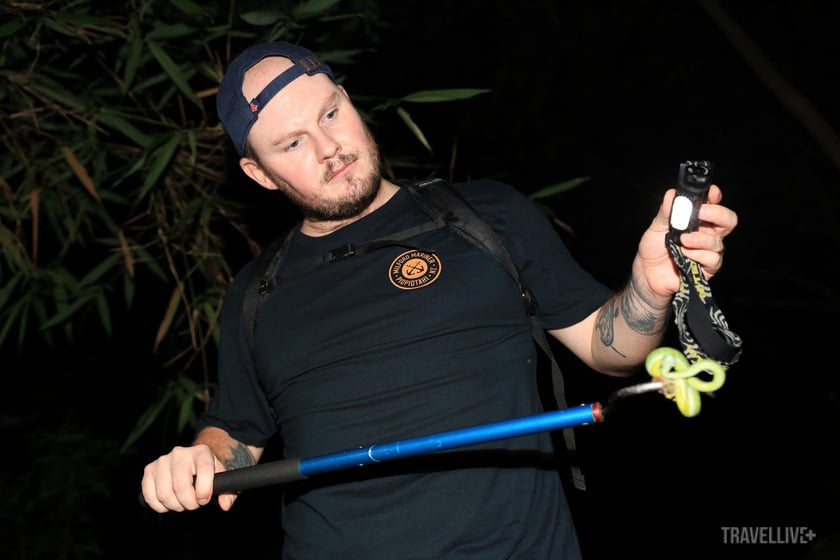
Although he has been on many herping trips in more than 35 countries, this is the first time Benjamin has seen a red-tailed green pit viper.
Go to tell the conservation story
Each herping trip usually lasts 3 days and 2 nights to increase the chance of encountering as many reptiles and amphibians as possible, helping tourists enjoy the trip to the fullest. However, the weather and biodiversity density are the core factors that help herping guides and tourists have the opportunity to find and observe these animals in the wild.
However, snakes in particular and reptiles and amphibians in general are often associated with fear and the view that "it is better to kill by mistake than to let go", so the number of species in the wild is also threatened. However, over the past 6 years, the group of young people Viet Herping has been tirelessly spreading the message of preserving this animal species that is often "badly known".
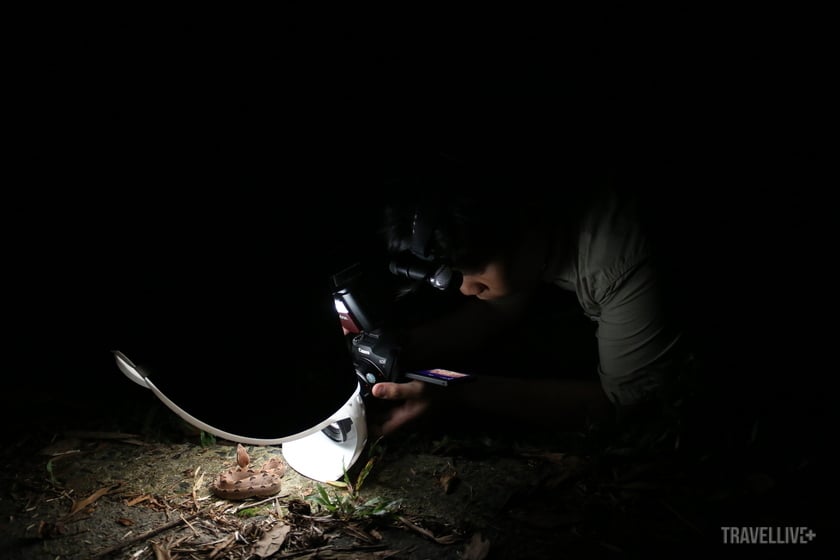
The group found a garter snake at the edge of the forest on the second night of herping at Dinh Mountain.

Behind the eco-tours are tireless feet searching, recording images and providing accurate information about reptiles and amphibians in the dense forests stretching across the S-shaped strip of land.
“The biggest difficulty when we first went 'snake hunting' was not having much money. There was a time when a friend and I traveled hundreds of kilometers to the forest with only 150,000 VND in our pockets for gas. When we arrived, we hung hammocks to sleep in the forest and then walked to look for reptiles. When we finished, we drove back to the city with a hungry stomach,” Nguyen Minh Phu, founder of Viet Herping, shared.
Initially, Minh Phu and his teammates started their trips because of their love for snakes, wanting to provide information about this animal, help people understand more about them and realize that this is a species that deserves to be preserved like many other wild animals.

After taking photos, the group will release the animal back into the wild.
Then the trips continued, the group of young people became more and more known. Among them were visitors from far away who wanted to be guided by the group to explore the world of reptiles in the forests of Vietnam. The special relationship with the job sprouted from there. However, with Viet Herping, they are not only guides telling the stories of less loved animals in nature, but also responsible young people with the effort to preserve the important link in the ecological balance chain - snakes.
With the profits from tourism activities, Viet Herping uses them to maintain snake conservation activities with the Viet Snake Rescuer project to limit conflicts between humans and snakes in residential areas, and support the release of animals back to their natural homes where they belong.

Group takes photo of a ky tom (earth dragon)
Note when joining a herping tour in Vietnam:
- For a snake hunting trip to be safe, visitors not only need to be in good health but also need to strictly follow the tour guide's instructions when coming into contact with or observing snakes.
- Visitors are also not allowed to harm or take animals out of their natural environment for any purpose.
- Currently, herping tours in Vietnam attract mainly foreign tourists with an average cost of about 1,800 USD and will change depending on demand and number of participants.
- Foreign tourists participating in herping tours through Viet Herping not only helps promote Vietnam's nature to international friends but also contributes to supporting conservation activities. Part of the cost from tourism activities will be used by Viet Herping to serve the work of receiving and releasing snakes back into the wild, limiting "conflicts" between snakes and humans in residential areas.





